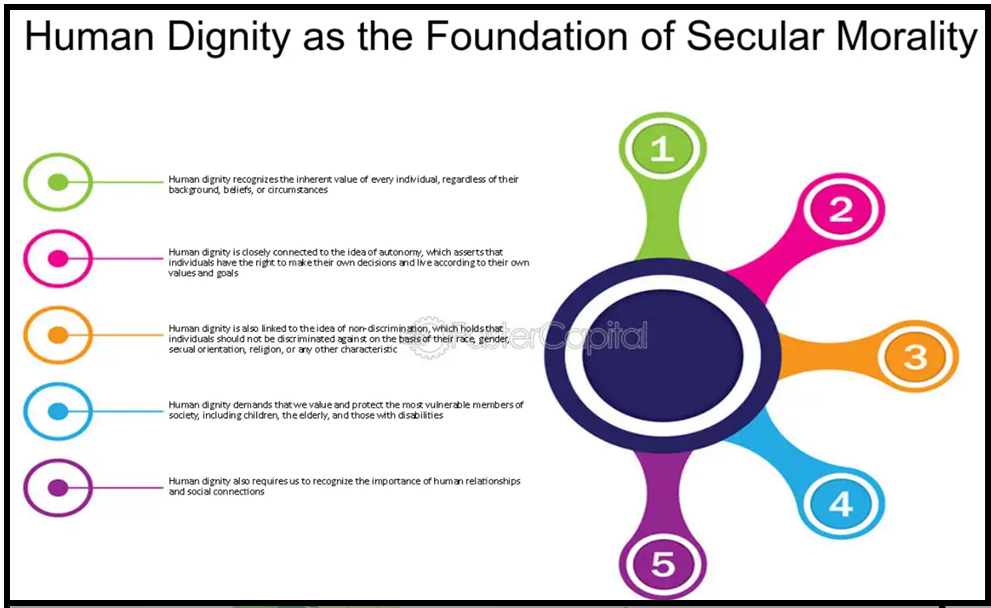HUMAN DIGNITY VERSUS RELIGIOUS PRACTICES
SYLLABUS:
GS 2:
- Indian Constitution—historical underpinnings, evolution, features, amendments, significant provisions and basic structure.
Focus:
- The Madurai Bench of the Madras High Court allowed the resumption of “annadhanam” (offering free food) and “angapradakshanam” (circumambulation) at the final resting place of Nerur Sathguru Sadasiva Brahmendral on the eve of his Jeeva Samathi day.
Source: FASTER CAPITAL
The Madurai Bench of the Madras High Court recently reinstated the practice of angapradakshanam, where devotees roll on plantain leaves left behind after a communal meal, citing religious freedom under Article 25(1) of the Constitution. This decision has sparked a debate over the balance between protecting religious practices and upholding human dignity, especially given previous judicial decisions emphasizing the latter.
Background of the Practice
- Annadhanam and Angapradakshanam: The Madurai Bench of the Madras High Court allowed the resumption of these practices at the final resting place of Nerur Sathguru Sadasiva Brahmendral on May 17.
- Traditional Belief: Angapradakshanam, which involves rolling on plantain leaves left by devotees after eating, has been practiced for over 100 years for perceived spiritual benefits.
- 2015 Suspension: The practice was halted by a Division Bench order in response to a public interest litigation (PIL) petition.
- 2019 Reinstatement: Justice G.R. Swaminathan reinstated the practice, citing Article 25(1) of the Constitution, which guarantees religious freedom.
- Spiritual vs. Privacy Rights: The judge argued that spiritual orientation is protected under the right to privacy, akin to gender and sexual orientation.
Legal and Constitutional Arguments
- Fundamental Rights: Justice Swaminathan linked the devotees’ beliefs to fundamental rights under Articles 14, 19(1)(a), 19(1)(d), 21, and 25(1) of the Constitution.
- Natural Justice: The reinstatement was justified on the grounds that the necessary parties were not included or heard in the 2015 PIL petition, constituting a breach of natural justice.
- Comparison with Sexual Orientation: The judge equated the right to spiritual practices with the rights recognized for gender and sexual orientation.
- Mahabharata Reference: The judge cited the Mahabharata to support the idea that spiritual benefits can be derived from rolling on leftover food.
- Division Bench’s Perspective: The Division Bench had found the practice to be a violation of human dignity and equality, ordering its immediate cessation in 2015.
Conflict with Human Dignity
- Human Dignity vs. Customary Practices: The Division Bench argued that rolling on leftover plantain leaves affects human dignity and violates the rights of equality and life under Articles 14 and 21.
- Voluntary Participation: Despite the voluntary nature of the act, the court ordered the practice to stop, emphasizing the importance of human dignity.
- Supreme Court Case Reference: The Division Bench relied on a pending Supreme Court case from Karnataka involving a similar practice.
- Communal Participation: Justice Swaminathan noted that the practice involved all devotees regardless of community, unlike the Karnataka case which involved only Brahmins’ leftovers.
- Public Order and Morality: The Supreme Court had stayed the Karnataka practice citing concerns about public order, morality, and health.
Justice Swaminathan’s Judgment
- Devotees’ Rights: The judgment emphasized the protection of devotees’ rights to continue the ritual under the guise of fundamental rights.
- Scientific Temper and Inquiry: The judgment was criticized for not considering the constitutional duty to develop a scientific temper and spirit of inquiry.
- Cultural Relativism vs. Universalism: The judgment leaned towards cultural relativism, relying on customary laws and religious beliefs over universal human rights standards.
- International Norms: The judge moved away from international norms that emphasize human dignity as mentioned in the UN Charter and the Universal Declaration of Human Rights.
- Superstitious Beliefs: Traditional practices like rolling on leftovers are seen as steeped in superstitions, maintained by the ignorant and fearful to guard privileges.
Role of the State
- State’s Duty: It is the duty of the state to change religious and customary practices that are unhealthy, harmful, and undermine human dignity.
- Educational Approach: Instead of outright rejection, the state should educate believers through reason and rational discussions.
- Promoting Humanism: The state should promote a community that values humanism and the spirit of inquiry.
- Balancing Rights: While protecting religious freedoms, the state must ensure that these do not infringe on the rights and dignity of others.
- Long-term Reform: Gradual and informed reform of harmful practices can lead to a more humane and rational society.
Balancing religious freedom and human dignity is a delicate task for the state. While safeguarding fundamental rights is essential, the state must also ensure that customary practices do not infringe on human dignity and equality. Educating the public and promoting a spirit of inquiry are crucial steps toward harmonizing these sometimes conflicting values.
The Doctrine of Essentiality
Constitutional Morality
|
Source:Hindu
Mains Practice Question:
Discuss the conflict between human dignity and religious practices with reference to the recent Madras High Court judgment on the resumption of angapradakshanam. How should the state balance the protection of fundamental rights and the promotion of human dignity?
Associated Articles:




